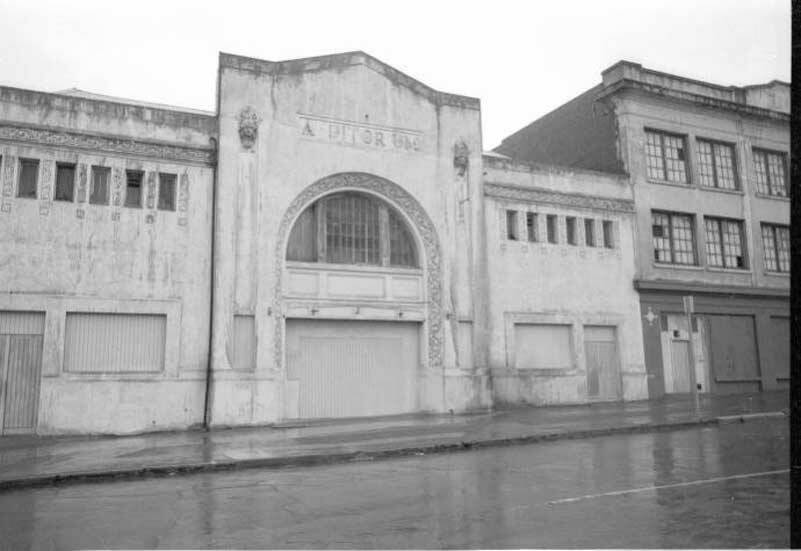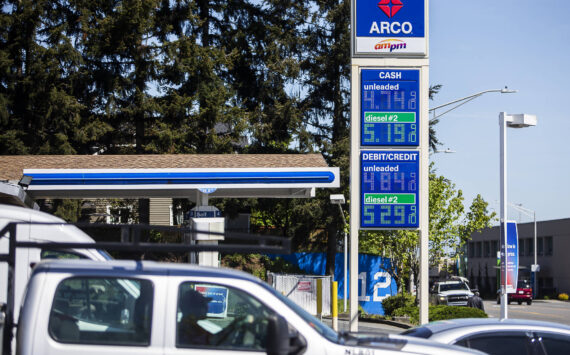By Morf Morford
Tacoma Daily Index
Ever go to a prominent tourist destination and notice how many shirts, banners and bumper stickers you see promoting the place?
Every body, billboard and slogan seems to treat the place as the center of the known universe. I’ve seen this in places as varied as London, San Francisco, Cannon Beach and Ocean Shores – even Seattle.
But never Tacoma.
I’ve seen a few of the “Gritty Tacoma” or Tacoma Octopus shirts (and I even own a few of them).
I, like many in Tacoma, wear my Tacoma duds proudly.
Sort of.
I see a few Tacoma branded shirts around town.
But I virtually never see them outside of town.
Even nearby places like Puyallup or University Place or Spanaway rarely show us shirts or banners proclaiming Tacoma.
I see Seattle hats and shirts almost everywhere.
That might be because, most of us in the greater Puget Sound area or even around the world, have a shared, mostly positive and coherent view of Seattle – it’s Starbucks, Amazon, Boeing, Microsoft, local news networks and the Space Needle.
Seattle is a city at work, putting finishing touches on itself and the future of all of us. Building cranes, coffee shops and construction crews are diligently at work.
Seattle, from traffic jams to esoteric caffeination, is serious. Seattle is a city that takes itself, and everything it does, seriously.
Tacoma, to put it mildly, is a very different place.
Few of us, even long term natives of Tacoma, have a long standing, reliable narrative that captures the essence of Tacoma.
Tacoma is many things.
But one thing it isn’t is a unified story of success, safety, promises fulfilled and prosperity assured.
Few, if any of us think of Tacoma as anything like a “promised land”.
You can check out any time you like…
I was born in Tacoma (Tacoma General to be exact) and raised in what was borderline wilderness (in more ways than one) on the southern edge of Parkland.
In high school, as my peers scoped out their futures, many eyed the big cities where they would make it big, or at least get by, in pursuit of their visions. New York City, Los Angeles and San Francisco were at the top of the list.
Several compromised and did well (or not) in Seattle. Few, if any of us, set our sights on Tacoma.
My personal journey, after some stops in college towns, a brief stay in Portland, a couple extended layovers in Los Angeles area, took me back to Tacoma. Like most people in Tacoma, I never intended to stay.
Tacoma born Father Bill Bischel used to say that Tacoma had a particular kind of impact on people – he said that once you were here for three years, it was nearly impossible to leave.
Even most of those who do leave Tacoma, never leave it entirely. Tacoma, like a strange sticky substance on your shoe, never fully comes off.
We natives of Tacoma take an almost inverted pride in our association with a city few in the Northwest (or anywhere else, really) knows or appreciates.
Seattle has its own story told in Seahawks or Space Needle iconography.
Tacoma imagery, sometimes even in Tacoma, needs an explanation.
The Octopus? Galloping Gertie? Grit city? Tacoma inter-urban? Tacoma’s Japantown? Tacoma’s Chinese expulsion? Monkeyshines?
When it comes to history, in Tacoma, as in every nation, if not city, it’s complicated.
Every neighborhood in Tacoma could tell a very different story.
No one area comes even close to defining Tacoma.
I love Point Ruston, but does it represent or embody Tacoma? Does the Proctor District? South Tacoma Way? McKinley Park? Westgate? 6th Avenue? Commerce? Broadway? Pacific Avenue?
Dale Chihuly and Ted Bundy grew up not far from each other in Tacoma.
Both attended local public schools. And each one brought Tacoma into the headlines in their own way.
Each one of them, no matter where life would take them, and like each one of us, would carry an unmistakable Tacoma essence with them. Tacoma, like many individuals, carries the shadow of what some consider its darkest days.
Most people consider the mid to late 1970s as the emptiest times for downtown Tacoma.
Most of the historic “anchor” stores had moved to the (then new) Tacoma Mall.
Store fronts stood empty – or had transitory occupants and more than a few questionable enterprises.
Almost anyone could start a business or even buy a building downtown. And many did.
Tiny shops and art studios flourished for a time.
Miniscule concert venues from the Crescent Ballroom (at 1308-10 Fawcett, currently used for parking and storage, it once hosted bands as diverse as Nirvana and Buck Owens) to the Court C Coffeehouse to Union Station to The Barbary Coast to The Swiss featured local and national live music up close – and cheap.
There are many who consider the 1970s as Tacoma’s most desperate years – and maybe they were.
But I consider it the closest Tacoma ever came to being something like a blank slate – a monochromatic setting where anything was, or seemed, possible.
Oddly enough, a well-known photographer caught much or downtown Tacoma back then. Most of his images, appropriately enough, were black and white.
You can see the Tacoma many of us knew and attempted to love back in the 1970s here.





